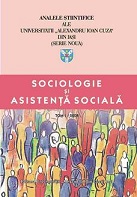Statistical analysis of labour resources in Romania, before COVID-19 pandemic crisis
Statistical analysis of labour resources in Romania, before COVID-19 pandemic crisis
Author(s): Ciprian Iftimoaei, Cristian-Ionuț BaciuSubject(s): Social Sciences, Sociology, Economic development
Published by: Editura Universităţii »Alexandru Ioan Cuza« din Iaşi
Keywords: labour resources; employment; unemployment; earnings; cluster analysis;
Summary/Abstract: In the three decades since the collapse of communism in Romania (1989), human resources have gone through several distinct moments in the process of social and economic transition, from the state economy to the market economy: (1) the period 1990-2007 characterized by declining employment, rising unemployment, low wages, employee poverty, labour migration to developed countries; (2) the period 2007-2019 in which Romanian employees experienced the benefits of the European integration process, which meant economic macrostability, increased foreign investment, projects financed by European operational programs that led to increased living standards, increased employment, labour crisis; (3) the period beginning with the 2020 pandemic year and the economic and social crisis, the effects of which are already quantified by official statistics. This paper proposes a retrospective analysis of the evolution of labour resources in Romania, after joining the European Union. The methodology used combines descriptive statistical analysis (labour resources, activity rate, employment rate, unemployment rate, average net earnings), hierarchical cluster analysis to compare the employment situation in Romania in the year of accession to the European Union (2007) versus the year before the onset of the pandemic crisis (2019) and the simple linear regression analysis, having as an independent variable the „unemployment rate” and as a dependent variable „the number of employees”. Simple linear regression is used not only for teaching purposes, but in addition to testing the link between variables, we wanted to find out how much the number of employees decreases if the unemployment rate increases by one percentage point nationwide. The data used come from the TEMPO Online database of the National Institute of Statistics and were processed with the SPSS.
- Issue Year: 13/2020
- Issue No: 2
- Page Range: 5-22
- Page Count: 18
- Language: English

